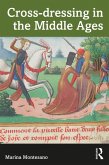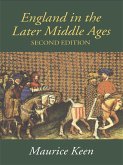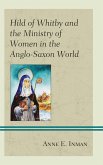Cross-dressing is a thought-provoking practice in a world that, in theory, adheres to neat distinctions of the functions and attires of males and females in society; this volume demonstrates that only a long-term analysis can fully account for the phenomenon in its various facets. If dress is a gender marker, the argument that it also marks many other conditions beyond the man-woman binary cannot be ignored. There is a dress for the cleric and one for the layman; there is the dress of the rich and that of the poor. In some cases, these other binary distinctions are intertwined with that of sex and gender, and this intersectional perspective is developed through a wide range of sources read with philological rigour.
The narrative style makes this book accessible to both students and general readers interested in the history of sexuality, gender history, and medieval studies.
Dieser Download kann aus rechtlichen Gründen nur mit Rechnungsadresse in A, B, BG, CY, CZ, D, DK, EW, E, FIN, F, GR, HR, H, IRL, I, LT, L, LR, M, NL, PL, P, R, S, SLO, SK ausgeliefert werden.









